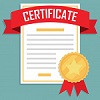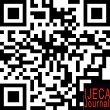The Effect of Model Variations on Chemistry Learning Outcomes
Abstract
Keywords
Full Text:
DOWNLOAD [PDF]References
Adam, F. F. (2017). Pengaruh Model Pembelajaran Dan Motivasi Belajar Terhadap Hasil Belajar Kognitif Peserta Didik Kelas Xi Ipa Madrasah Aliyah Syekh Yusuf Sungguminasa (Studi Pada Materi Larutan Asam Dan Basa). Chemistry Education Review (CER), 0(0)volume? issue?, 73–83. https://doi.org/10.26858/CER.V0I0.3881
Bokosmaty, R., Bridgeman, A., & Muir, M. (2019). Using a Partially Flipped Learning Model To Teach First Year Undergraduate Chemistry. Journal of Chemical Education, 96(4), 629–639. https://doi.org/10.1021/ACS.JCHEMED.8B00414
Damayanti, M., & Jirana. (2018). Pengaruh Model Pembelajaran dan Minat Belajar terhadap Hasil Belajar Kimia Peserta Didik Kelas XI IPA SMAN 1 Tinambung. Saintifik, 4(1), 47–53.
Darmadi, H. (2013). Dimensi-dimensi Metode Penelitian Penddikan dan Sosial Konsep Dasar dan Implementasi. Alfabeta.
Dewi, R. K., Wardani, S., Wijayati, N., & Sumarni, W. (2019). Demand of ICT-based chemistry learning media in the disruptive era. International Journal of Evaluation and Research in Education (IJERE), 8(2), 265–270. https://doi.org/10.11591/IJERE.V8I2.17107
Fauzi, A., & Satrianto, A. (2020). The Effect of Parents’ Social Economic Condition, Way of Learning and Learning Motivation to the Learning Outcome of Economy Subject. 152,issue? 413–421. https://doi.org/10.2991/AEBMR.K.201126.046
Guo, L., Huang, J., & Zhang, Y. (2019). Education Development in China: Education Return, Quality, and Equity. Sustainability (Switzerland), 11(13), 1–20. https://doi.org/10.3390/SU11133750
Helmiati. (2012). Model Pembelajaran. Aswaja Pressindo.
Hessal Alif, M., Pujiati, A., Yulianto, A., Negeri, S., Jl Raksa Wijaya, I., & Sembung Wetan, K. (2020). The Effect of Teacher Competence, Learning Facilities, and Learning Readiness on Students’ Learning Achievement Through Learning Motivation of Grade 11 Accounting Lesson in Brebes Regensy Vocational High School. Journal of Economic Education, 9(2), 150–160. https://doi.org/10.15294/JEEC.V9I2.40155
Lastri, L., Kartikowati, S., & Sumarno, S. (2020). Analysis of Factors that Influence Student Learning Achievement. Journal of Educational Sciences, 4(3), 679–693. https://doi.org/10.31258/JES.4.3.P.679-693
Lestari, P., Wardani, S., & Sumarti, S. S. (2018). Influence of Guided Inquiry Model on Students Cognitive Learning Outcome in Stoichiometrytopic. Journal of Innovative Science Education, 7(2), 130–135. https://doi.org/10.15294/JISE.V7I2.23853
Lukman, I. R., Unaida, R., & Fakhrah, F. (2022). Developing of Four-Tier Diganostic Test to Identify Test Profile on Acid and Base Materials. IJECA (International Journal of Education and Curriculum Application), 5(1), 7–16. https://doi.org/10.31764/IJECA.V5I1.6359
Marlina, L., & Solehun. (2021). Analisis Faktor-Faktor yang mempengaruhi Hasil Belajar Bahasa Indonesia pada Siswa Kelas IV SD Muhammadiyah Majaran Kabupaten Sorong. Jurnal Keilmuan, Bahasa, Sastra, Dan Pengajarannya, 2(1), 66–74. https://unimuda.e-journal.id/jurnalbahasaindonesia/article/download/952/582
Muliaman, A., Suyanti, R. D., & Eddiyanto, D. (2018). Relationship between Motivation and College Students Learning Outcomes on Chemical Kinetic Material at University. Atlantis Press, 200, 26–28. https://doi.org/10.2991/AISTEEL-18.2018.6
Nugraheni, P. W., Joharmawan, R., & Utomo, Y. (2022). Collaborative Guided Inquiry for Chemistry Learning Outcomes Improvement on Solubility Product Concept. PSEJ (Pancasakti Science Education Journal), 7(1), 31–40. https://doi.org/10.24905/PSEJ.V7I1.134
Priansa, D. J. (2019). Pengembangan Strategi dan Model Pembelajaran. Pustaka Setia.
Purwanto, M. N. (2017). Psikologi Pendidikan. Remaja Rosdakarya.
Ratini, Muchtar, H., Suparman, M. A., Tamuri, A. H., & Susanto, E. (2018). The Influence of Learning Models and Learning Reliance on Students’ Scientific Literacy. Jurnal Pendidikan IPA Indonesia, 7(4), 458–466. https://doi.org/10.15294/JPII.V7I4.12489
Roflin, E., & Zulvia, F. E. (2021). Kupas Tuntas Analisis Korelasi (M. Nasrudin (ed.)). Nasya Expanding Management.
Rusmansyah, Yuanita, L., Ibrahim, M., Isnawati, & Prahani, B. K. (2019). Innovative Chemistry Learning Model: Improving the Critical Thinking Skill and Self-Efficacy of Pre-Service Chemistry Teachers. Journal of Technology and Science Education, 9(1), 59–76. https://doi.org/10.3926/JOTSE.555
Sugiyono. (2016). Statistika untuk Penelitian. Alfabeta.
Undang-Undang Republik Indonesia. (2003). Undang-Undang Republik Indonesia Nomor 20 Tahun 2003 tentang Sistem Pendidikan Nasional.
Wijaya, O. P., & Bukhori, I. (2017). Effect of Learning Motivation, Family Factor, School Factor, and Community Factor on Student Learning Outcomes on Productive Subjects. JPBM (Jurnal Pendidikan Bisnis Dan Manajemen), 3(3), 192–202. https://doi.org/10.17977/UM003V3I32017P192
DOI: https://doi.org/10.31764/ijeca.v5i3.11500
Refbacks
- There are currently no refbacks.
Copyright (c) 2022 Isna Rezkia Lukman, Ratna Unaida, Sri Setiawaty, Najiha Sabrina, Zahara Zahara

This work is licensed under a Creative Commons Attribution-ShareAlike 4.0 International License.
IJECA (International Journal of Education and Curriculum Application) already indexed:










___________________________________________________________________
| |
____________________________________________________________________
IJECA Publisher Office:







.jpg)




